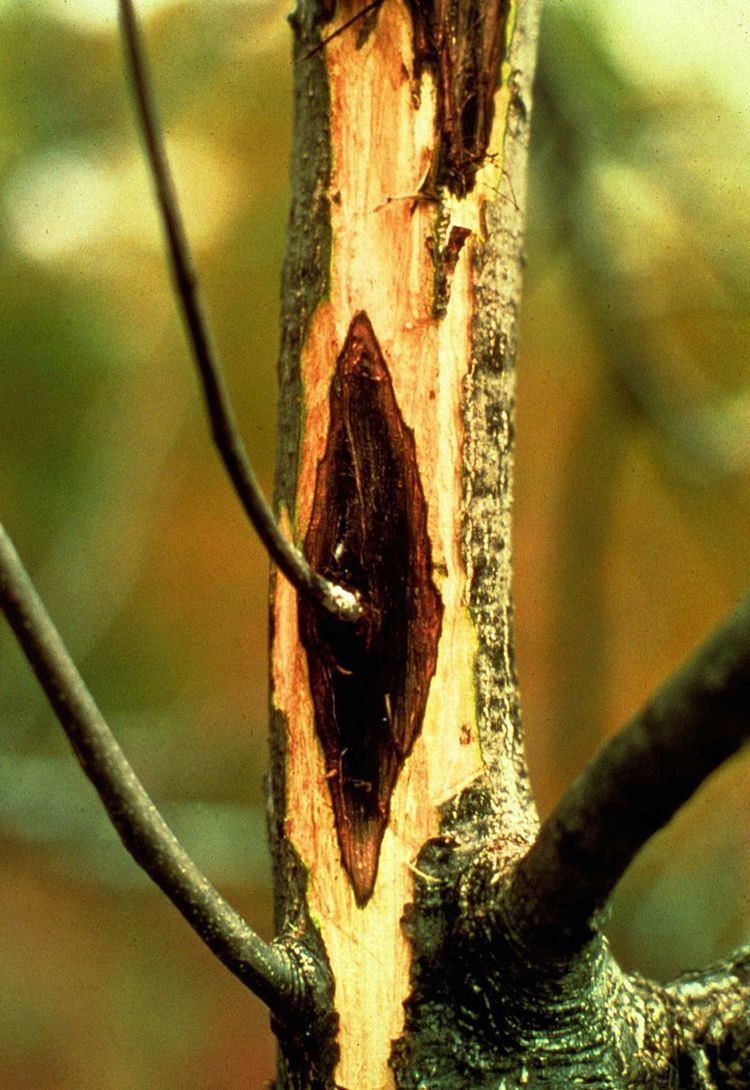 | ||
Canker and anthracnose generally refer to many different plant diseases of such broadly similar symptoms as the appearance of small areas of dead tissue, which grow slowly, often over years. Some are of only minor consequence, but others are ultimately lethal and therefore of major economic importance in agriculture and horticulture. Their causes include such a wide range of organisms as fungi, bacteria, mycoplasmas and viruses. The majority of canker-causing organisms are bound to a unique host species or genus, but a few will attack other plants. Weather and animals can spread canker, thereby endangering areas that have only slight amount of canker.
Although fungicides or bactericides can treat some cankers, often the only available treatment is to destroy the infected plant to contain the disease.
